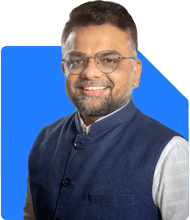pooja: I am 37 year old Married female. My monthly income is 45k. My monthly expenses are 15k. My monthly savings is RD: 5k. my son is 2 years old and i want to invest money for their higher education for 15-18 years.I need advice on how to use the money to get a medical insurance and to invest in mutual funds.
Ans: Assessing Your Current Financial Position
First of all, I would like to appreciate your disciplined approach toward savings. With your current monthly income of Rs 45k and expenses of Rs 15k, you are already saving a significant portion of your income. The Rs 5k in a recurring deposit (RD) shows that you are working towards building a safe and steady financial future.
Given that your son is just 2 years old, planning for his higher education over the next 15-18 years is the right step to take now. You also mentioned your desire to secure medical insurance and explore mutual fund investments. Let’s explore both these areas in detail, along with other suggestions to create a 360-degree financial plan for you.
Health Insurance: A Must for Family Protection
Before jumping into investments, it’s crucial to protect your family’s health. Medical emergencies can be costly, and without insurance, they can drain your savings. At 37, the time is ideal to get a comprehensive health insurance policy.
Family Floater Plan: You should consider a family floater health insurance plan. It covers the entire family under one plan. This will include you, your spouse, and your son.
Coverage Amount: A health insurance plan with a coverage of at least Rs 10-15 lakhs is recommended. Given the increasing cost of medical treatments, it is wise to have adequate coverage.
Additional Top-Up Plan: You can also opt for a top-up health plan. It provides additional coverage once the basic limit is exhausted. This is a cost-effective way to increase your coverage.
Critical Illness Coverage: Along with regular health insurance, you might want to consider critical illness coverage. It covers major illnesses like cancer, heart attacks, and kidney failure. Such illnesses lead to high medical costs, and a critical illness plan can help manage them.
Hospital Network: Ensure that the insurance provider has a wide network of hospitals, including those near your residence.
A Certified Financial Planner (CFP) can guide you in choosing the right insurance plan. They can help you compare premiums and select one that fits your budget while offering adequate coverage.
Evaluating Your Investment Strategy
Since you want to invest for your son’s education over the next 15-18 years, this is considered a long-term financial goal. For such goals, mutual funds are one of the best investment options. They offer the potential for higher returns, and with a long-term horizon, the power of compounding works in your favor.
Let’s break down the types of mutual funds you should consider and other important aspects.
Actively Managed Mutual Funds Over Index Funds
Given that you have a long-term goal, actively managed mutual funds are preferable to index funds. Index funds, though low-cost, simply follow the market index. This means they offer no protection during market downturns.
Better Performance: Actively managed funds have a professional fund manager who can make changes in the portfolio based on market conditions. This helps in generating better returns than index funds.
Risk Management: The fund manager can shift investments to safer assets during a market downturn, reducing risk.
In contrast, index funds will simply follow the ups and downs of the market. They do not have any risk management strategy. Hence, actively managed funds are a better option, especially for long-term investments like your son’s education.
Benefits of Regular Funds Through a Certified Financial Planner
When investing in mutual funds, you might come across the option of investing in direct or regular funds. While direct funds come with a lower expense ratio, they require you to handle everything on your own. This can be tricky, especially if you don’t have in-depth knowledge of the market.
Expert Guidance: By investing through a CFP, you get expert advice. They help you choose the best-performing funds, rebalance your portfolio, and align your investments with your goals.
Regular Monitoring: A CFP will regularly review your investments, ensuring they are on track to meet your goals. They can make necessary adjustments based on market conditions.
Direct funds may seem like a good option because of lower costs, but the lack of professional guidance can lead to poor decision-making. The benefits of regular funds, managed with the help of a CFP, far outweigh the slight cost difference.
Mutual Funds for Your Son’s Education
Since your son’s education is a long-term goal, equity mutual funds are the best choice. Over a period of 15-18 years, equity markets have historically delivered higher returns than debt instruments.
Equity Mutual Funds: These funds invest in stocks and have the potential to deliver high returns. Since you have a long investment horizon, the volatility of the stock market will be averaged out.
Balanced or Hybrid Funds: If you prefer a bit of safety, balanced or hybrid funds can be a good choice. They invest in both equity and debt, giving you the growth potential of equity while providing some stability through debt.
Systematic Investment Plan (SIP): Instead of investing a lump sum, you should invest through a SIP. This allows you to invest a fixed amount every month. SIPs benefit from rupee-cost averaging, where you buy more units when prices are low and fewer when prices are high.
By starting a SIP in equity mutual funds now, you’ll be able to build a substantial corpus by the time your son is ready for higher education.
Building an Education Corpus
Let’s now focus on building a sizeable education corpus for your son. You mentioned that your monthly income is Rs 45k, and after expenses, you can save Rs 5k in an RD. To achieve your education goal, consider increasing the amount you invest.
Increase Monthly Savings: Consider increasing your monthly savings from Rs 5k to Rs 10k-15k. This will accelerate your investment growth and help you meet your education goal more effectively.
Diversification: Apart from equity mutual funds, you can also invest in debt mutual funds for a portion of your portfolio. This will provide stability to your investments, especially when your goal approaches.
Review Periodically: Every year, review your portfolio. As you get closer to your goal, you can shift a portion of your investments to safer instruments like debt funds or fixed deposits. This will protect your corpus from market volatility.
Emergency Fund: A Safety Net
It’s important to have an emergency fund before making long-term investments. An emergency fund helps cover unexpected expenses without touching your investments.
3-6 Months of Expenses: Set aside an emergency fund equivalent to 3-6 months of your monthly expenses. In your case, this would be around Rs 45k to Rs 90k.
Keep It Liquid: Your emergency fund should be easily accessible. A good option is to keep it in a liquid mutual fund or a high-interest savings account. This will provide quick access to funds while earning some interest.
An emergency fund acts as a safety net, ensuring that you don’t have to dip into your long-term investments during a financial crisis.
Life Insurance: Protecting Your Family’s Future
As a mother, it’s essential to secure your family’s financial future in case of any unfortunate event. A life insurance policy can help provide for your child’s future even in your absence.
Term Insurance: The most suitable type of life insurance is a term insurance policy. It offers a high sum assured at an affordable premium.
Adequate Coverage: Your life insurance coverage should be at least 10-12 times your annual income. With an income of Rs 45k per month, you should consider a coverage of Rs 60-70 lakhs.
Avoid mixing insurance with investment. Investment-cum-insurance products like ULIPs or endowment policies often offer low returns and inadequate coverage. Stick to term insurance for life protection and invest in mutual funds for wealth creation.
Education Inflation: Planning for Rising Costs
Education costs are rising at a rapid rate in India. When planning for your son’s higher education, it’s essential to consider the impact of inflation on education expenses.
Education Costs Double: In India, education costs typically double every 7-10 years. This means that by the time your son is ready for higher education, costs will be significantly higher than they are today.
Plan for Inflation: Ensure that your investments are growing at a rate higher than inflation. Equity mutual funds, over the long term, have historically outpaced inflation, making them ideal for education planning.
By taking inflation into account, you can ensure that your education corpus will be sufficient to cover your son’s higher education expenses.
Financial Planning for Other Life Goals
In addition to planning for your son’s education, it’s important to plan for other life goals. This includes your retirement, purchasing a home, or any other major expense you foresee.
Retirement Planning: Even though your immediate focus is your son’s education, you should also start planning for your retirement. Consider opening a Public Provident Fund (PPF) account or investing in a National Pension System (NPS) to secure your retirement.
Diversify Across Goals: Allocate your investments based on your financial goals. While equity mutual funds can be used for your son’s education, you might want to use safer options like PPF or fixed deposits for other medium-term goals.
A holistic financial plan considers all your life goals and ensures that you have the right investments to achieve each one.
Final Insights
To sum up, you are on the right path with your savings and planning. However, by increasing your monthly investments, securing health insurance, and diversifying your investments into mutual funds, you can further strengthen your financial plan.
Ensure that you review your investments periodically and adjust them based on changing goals or market conditions. With disciplined savings and smart investment choices, you can comfortably meet your financial goals for your son’s education and beyond.
Best Regards,
K. Ramalingam, MBA, CFP,
Chief Financial Planner,
www.holisticinvestment.in





















